Formation of the 8th Evacuation Hospital
Charlottesville, Virginia and Pageland, North Carolina
On February 4, 1942, the Charlottesville Daily Progress newspaper reported:
The University of Virginia again will sponsor a medical unit for war service with the Nation’s armed forces. This time it will be an evacuation hospital unit, designed primarily for emergency surgical cases, instead of a general hospital such as the University sponsored in Base Hospital No. 41 in the First World War. Permission was given yesterday by President John L. Newcomb of the University and Dean Harvey E. Jordan of the School of Medicine for the organization to proceed. [Leavell, p. 3]

Dr. Staige D. Blackford
On March 2, 1942, Dean Jordan wrote a letter recommending that Dr. Staige E. Blackford be made director of the unit, which was to be organized as the 8th Evacuation Hospital. Three days later Lieutenant Colonel Francis M. Fitts, who was in charge of organizing affiliated units for the Medical Corps, replied: “General Magee has approved the designating of Dr. Staige D. Blackford as Director of the Unit. His application has been forwarded with favorable recommendation for his appointment as Lieutenant Colonel.”
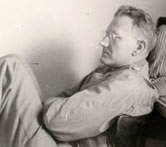
Dr. E. Cato Drash
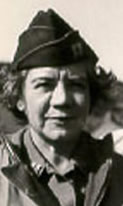
Captain Ruth Berry
Over four hundred people were required to staff a 750-bed evacuation hospital, including 47 commissioned officers and 52 commissioned nurses. Dr. E. Cato Drash, Associate Professor of Surgery and Chief of the Thoracic Surgery Section at the University Hospital, assisted Dr. Blackford in organizing the unit. When Dr. Blackford learned that each affiliated unit was encouraged to obtain its own nursing personnel, he asked a former instructor at the School of Nursing, Ruth Beery, to be the principal chief nurse. By the beginning of May, less than two months after Dr. Blackford’s appointment, the organization of the unit was virtually complete.
The Call to Active Duty
It was expected that the 8th Evacuation Hospital would be activated on September 1, 1942. To provide field experience during July and August, the members of the University unit applied for active duty. While awaiting orders, the individuals closed medical practices, transferred patients and their records, sold or stored equipment, and made wills. By the end of June members of the unit received a red-bordered “IMMEDIATE ACTION” order to active duty.
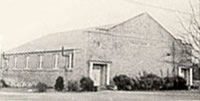
Gym, Pageland, South Carolina
The unit was assigned to the 3d Evacuation Hospital which it joined in Pageland, South Carolina. The new officers spent the first two weeks in basic training. Four or five hours each day were devoted to lectures on military courtesy, medical records, military administration, field sanitation, camouflage, and the use of gas masks. Both officers and enlisted men went on road marches and learned to roll packs and pitch tents.
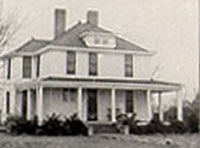
Nurses Quarters, Pageland, S.C.
After general training they set up an evacuation hospital to serve the troops during maneuvers. Tents for the medical and surgical wards, operating room, dispensary, kitchen, x-ray, and messes were pitched in a field. The members of the unit were also responsible for unpacking the hospital equipment and drugs for the pharmacy.

Officers’ Club, Pageland, S.C.
They discovered that most items had been wrapped in November 1918 newspapers. The equipment was incomplete in modern operating room equipment, lacking in essential laboratory and X-ray equipment, and stocked with obsolete items. Lieutenant Colonel Blackford wrote home to his wife:
Whoever did the packing of our supplies had a keen sense of humor, sometimes putting office equipment, kitchen utensils, books, drugs, surgical apparatus, towels, and so forth all in the same box. And as for the surgical supplies we have every kind of imaginable instrument for examining and treating eyes or removing a stomach, but there is not a single surgical scalpel in the $86,000 worth of equipment. If there are any hemostats in the six carloads of medical supplies, we haven’t been able to find them3 [Byrd Stuart Leavell, The 8th Evac: A History of the University of Virginia Hospital Unit in World War II. Richmond: Dietz, 1970, p.18]
By the middle of July the Hospital began receiving patients. In a little over a month more than 1600 patients were hospitalized, most with minor disorders, but some with more serious diagnoses such as hepatitis, encephalitis, amebic dysentery, and appendicitis.
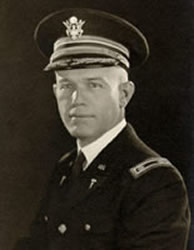
Lieutenant Colonel Lincoln F. Putnam
The 8th Evacuation Hospital was activated on August 19, 1942, under the command of Lieutenant Colonel Lincoln F. Putnam, who had been the commanding officer of the 3d Evacuation Hospital. Further training was given to the unit at Fort Benning, Georgia, and Camp Kilmer, New Jersey. In addition to the usual calisthenics, drills, lectures, and athletics, the officers assisted the Camp Kilmer station hospital personnel in performing physical examinations on troops due to be sent overseas within 48 hours. One thousand men could be examined in four hours by five-person teams.
